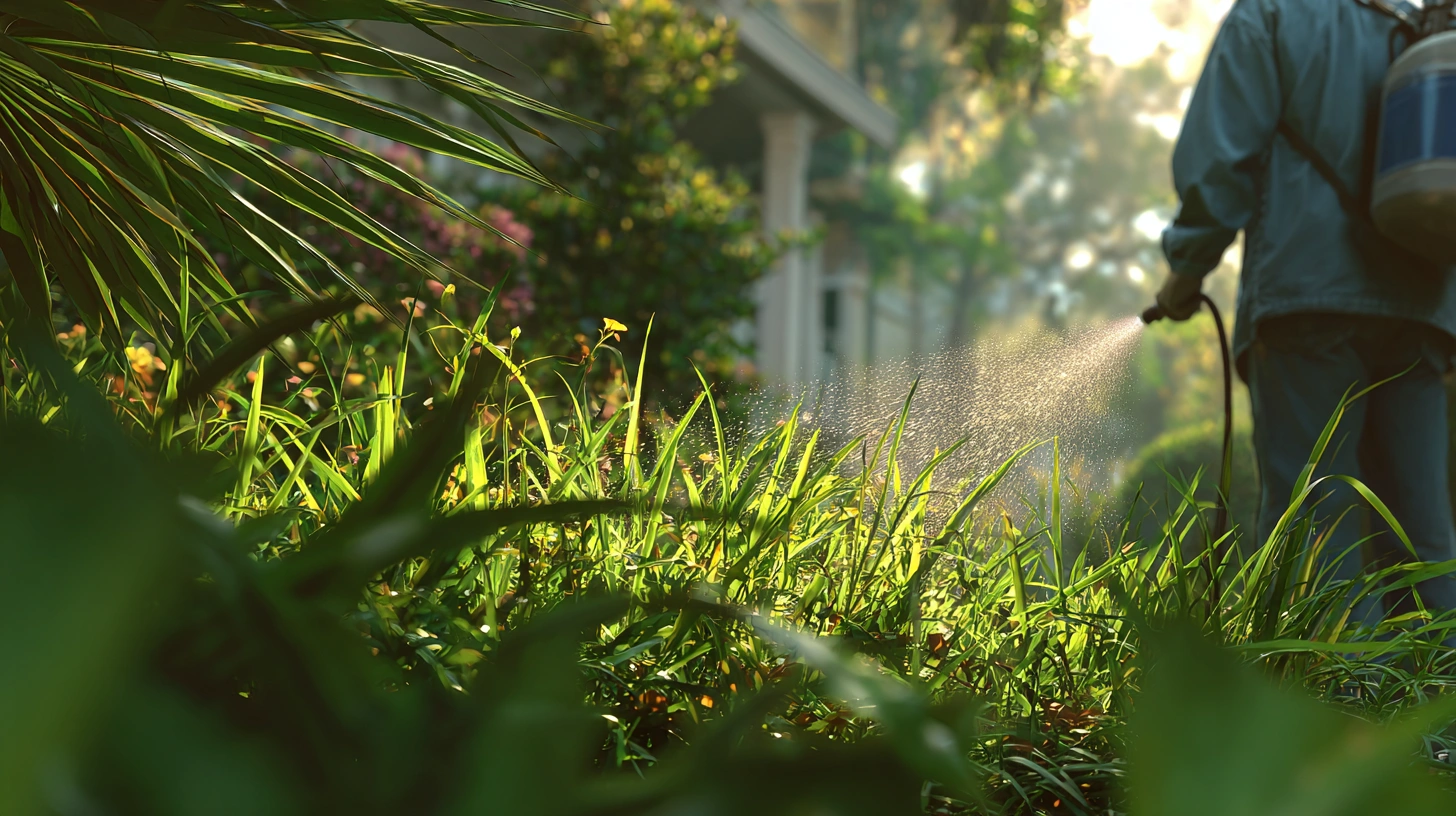Liquid vs Granular Atrazine: Timing for Centipedegrass

Master the timing and methods for using granular vs liquid atrazine on centipedegrass in NW Florida. Learn safe windows and best practices.
Liquid vs Granular Atrazine: Timing for Centipedegrass in NW Florida
Introduction
If you've ever watched your centipedegrass lawn turn a sickly yellow after a spring weed-and-feed session, you know timing matters. In Northwest Florida's sandy soils and high-water-table environment, choosing between granular atrazine products like Scotts Turf Builder Bonus S Southern Weed & Feed and post-emergent liquid atrazine--and applying them at the right moment--can mean the difference between a lush, emerald yard and a stressed-out patchy mess.
In this guide, we'll break down why centipedegrass is especially sensitive to atrazine, compare the pros and cons of granular vs liquid formulations, and walk you through safe application windows. By the end, you'll have a clear, region-specific plan for keeping weeds in check without harming your turf or the environment. No fluff--just practical, field-tested advice for homeowners who want pro-level results.
Why Timing Matters for Centipedegrass
Centipedegrass is a warm-season turf that thrives when temperatures consistently stay above 70 degreesF and the grass is actively growing. Atrazine works by disrupting photosynthesis in broadleaf and grassy weeds, but slow-growing or stressed centipedegrass can pick up the herbicide too--and that's where phytotoxicity (chemical burn) happens.
Temperature and Growth: Applying atrazine when daily highs dip into the low 80s or nights cool down slows the turf's metabolic rate, raising the risk of leaf burn.
Active Growth Window: Aim for mid-March to early May when centipedegrass is green and vigorous. A secondary window in early autumn (typically mid-September) can handle lingering weeds, but skip the dog days of late summer.
I've seen lawns recover beautifully when atrazine goes down after the third mowing in spring. Miss that window, and you're flirting with yellowing blades and stunted growth.
Ready to transform your lawn?
Get personalized AI guidance for the perfect lawn. Download Grassmaster Gus now!
Liquid vs Granular Atrazine: Pros and Cons
Atrazine comes in two main backyard forms: granular weed-and-feed products and ready-to-spray liquids. Each has its place, depending on the weeds and the season.
Pre-Emergence vs Post-Emergence
Granular (e.g., Scotts Turf Builder Bonus S) works best as a pre-emergent--before tiny weed seeds sprout. It stays in the upper soil layer, blocking growth hormone pathways in germinating weeds.
Liquid atrazine shines post-emergence on young, visible weeds. It moves quickly into leaves, shutting down photosynthesis on contact. If you've got dandelions or young clover popping up in spring, a carefully mixed liquid spray can zap them fast.
Centipedegrass Sensitivity
Both forms can injure centipedegrass if used outside the optimal window. Granules may sit on the leaf surface on cooler days and burn the grass. Liquids, if too concentrated or applied under slow growth conditions, can lead to scorch marks.
Pros and Cons Summary:
Granular Atrazine
Pros: Easier coverage, built-in fertilizer, long-lasting pre-emergent control
Cons: Risk of runoff in sandy soils, less flexible timing, requires immediate light irrigation
Liquid Atrazine
Pros: Spot-treating, precise rates, effective on emerged weeds
Cons: Needs tank mixing, multiple passes may be needed, more PPE required
Safe Application Windows for NW Florida
Florida law and UF/IFAS recommendations set the legal and biological clock.
Early Spring (Mid-March to Early May): Best for a granular weed-and-feed application. Soil temps above 60 degreesF ensure activation without stressing the grass.
Early Fall (Mid-September): If weeds are stubborn after summer, a light spot treatment with liquid atrazine can help. Avoid full-plot granular applications now.
Key Label Tips:
Don't apply granular atrazine products after the grass slows down or when highs dip below 85 degreesF at night.
Limit atrazine-based weed-and-feed to two applications per year.
Always water in granules within 1 hour to prevent drift and runoff.
References: UF/IFAS Weed Management Guide | Scotts Bonus S Label
Best Practices for Environmental Safety
NW Florida's sandy soils and high water tables demand extra care.
Prevent Runoff: Don't let granules pile on driveways or sidewalks. Sweep any stray granules back onto the turf.
Avoid Water Bodies: Maintain a buffer zone of at least 25 feet from ponds and streams to reduce leaching into waterways (per Florida Pesticide Law).
PPE and Cleanup: Always wear gloves and eye protection. Wash equipment thoroughly after use to avoid cross-contamination on ornamentals or vegetable beds.
Cultural Controls: Healthy turf crowds out weeds. Mow centipedegrass at 1-2 inches, irrigate deeply but infrequently, and apply a balanced fertilizer in mid-May to keep roots strong.
Troubleshooting Late-Season Applications
Applied weed & feed too late? Don't panic, but act fast.
Watch for Warning Signs: Yellowing blades, brown leaf tips, or stunted patches show phytotoxicity.
Flush the Area: A light irrigation (1/2-inch) can help dilute residual atrazine in the thatch zone.
Hold Off on Fertilizer: Wait 6-8 weeks before any additional feed to let the turf recover.
Spot-Treat or Hand-Pull: Focus on stubborn weeds with a targeted post-emergent herbicide or good old-fashioned hand-pulling.
If damage is extensive, overseed bare spots next spring when soil warms. Centipedegrass doesn't reseed itself well, so your best bet is fresh plugs or sprigs.
Conclusion
When it comes to centipedegrass in Northwest Florida, the difference between a vibrant lawn and a chemical casualty often boils down to timing. Granular atrazine products like Scotts Turf Builder Bonus S can offer season-long pre-emergent protection--but only if you apply in the early spring window. Liquid atrazine gives you surgical precision on post-emergent weeds but demands careful mixing and application under ideal growing conditions.
Stick to UF/IFAS and label guidelines: mid-March to early May for granular weed-and-feed, mid-September spot treatments for persistent fall weeds. Protect the environment by preventing runoff, using proper PPE, and observing buffer zones near water. And if you've gone off schedule, dial back on additional chemicals and lean into cultural controls until spring.
Follow these field-tested steps, and you'll keep your centipedegrass lush, weed-free, and ready to earn that nod of approval from the neighbors.


